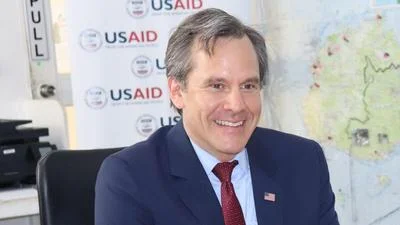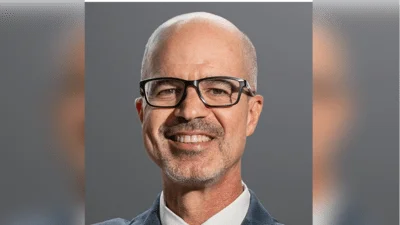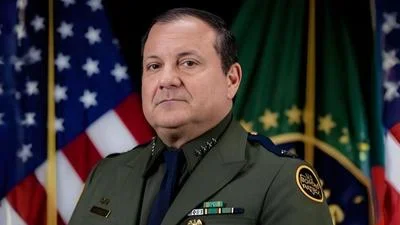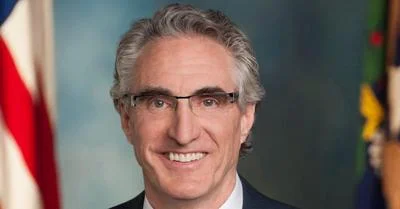The Congressional Record is a unique source of public documentation. It started in 1873, documenting nearly all the major and minor policies being discussed and debated.
“STATEMENTS ON INTRODUCED BILLS AND JOINT RESOLUTIONS” mentioning the U.S. Dept. of Energy was published in the Senate section on pages S12889-S12892 on Oct. 20, 2003.
The publication is reproduced in full below:
STATEMENTS ON INTRODUCED BILLS AND JOINT RESOLUTIONS
______
By Mr. VOINOVICH (for himself and Mr. DeWine):
S. 1758. A bill to require the Secretary of the Treasury to analyze and report on the exchange rate policies of the People's Republic of China, and to require that additional tariffs be imposed on products of that country on the basis of the rate of manipulation by that country of the rate of exchange between the currency of that country and the United States dollar; to the Committee on Finance.
Mr. VOINOVICH. Mr. President, today Senator DeWine and I have introduced legislation that will help level the playing field for American manufacturers futilely struggling to keep pace with their Chinese competitors. My legislation, the Currency Harmonization Initiative Through Neutralizing Action (CHINA) Act of 2003, would allow for the use of tariffs to punish China for unfair trade practices that makes Chinese exports cheaper, in effect subsidizing them, and U.S. exports more expensive. Representatives English, Ballenger, and Mark Green, my colleagues on the other side of the Capitol, have already introduced this legislation in that body.
I am deeply concerned with the harm that the People's Republic of China (China) is doing to our economy by pegging the value of its currency, the renminbi, to the U.S. dollar because Ohio is a manufacturing State. Manufacturing contributes to the quality of life in Ohio by providing more than one million jobs for Ohio workers, an annual payroll of more than $45 billion, the second highest weekly earnings of any economic sector, support for local communities and schools with more than $1 billion in corporate franchise and personal property taxes, and more than $26 billion in products to more than 196 countries.
After a significant recession in 2001, the 2002-2003 manufacturing recovery has been the slowest on record; during this time, roughly 2.7 million jobs have been lost. In Ohio, we have lost 170,000 manufacturing jobs since July 2000--that's nearly 16 percent or one out of six. Over the past year, I have held numerous listening sessions throughout the State of Ohio to hear from these manufacturers and see what they attribute this loss of jobs to. Overwhelming, I have heard that China, and particularly its policy of pegging its currency to the dollar, is one of their top concerns and is costing Ohio manufacturing jobs. It is these concerns which have led me to introduce this legislation.
If the value of the renminbi is allowed to float freely, as the currencies of our other major trading partners do, it would reflect China's enormous trade surplus and increase significantly in value. China's systematic undervaluation of its currency makes its exports less expensive and puts U.S. workers at a severe disadvantage. This is both unfair and unacceptable.
I have long advocated free trade, provided it is fair trade. China's currency policy clearly tilts the international playing field against workers in Ohio and across the entire United states. This is unacceptable. As a major international trading nation, China's currency should be allowed to float and to have its value reflect its net trade positions with other nations. This is only fair.
My bill will help level the playing field by requiring the Secretary of the Treasury, within sixty days of enactment, to analyze and report to Congress whether China is manipulating its currency to achieve an advantage in trade. If the Secretary finds manipulation, the report to Congress will indicate the degree of manipulation against the dollar. Within thirty days after reporting manipulation to Congress, the Secretary is required to levy tariffs equal to the percentage of manipulation found. This is in addition to tariffs currently in place on Chinese imports.
Furthermore, the Treasury Secretary is directed to report to Congress thereafter on a yearly basis from date of enactment. Finally, the legislation expresses the sense of Congress that the Administration should pursue all means available (WTO, IMF and Sections 301-310 of the Trade ACt of 1974) to remedy China's currency manipulation.
If we are to stop the hemorrhaging of American manufacturing jobs, we must take strong measures to persuade China to abandon its peg policy and allow its currency to be set in the free and open marketplace. This is exactly what my legislation does.
I would ask that my colleagues, especially from those States that are feeling the effects of this manufacturing crisis deeply, support this legislation and consider cosponsoring it.
______
By Mr. COLEMAN:
S. 1760. A bill to amend title 35, United States Code, with respect to patent fees, and for other purposes; to the Committee on the Judiciary.
Mr. COLEMAN. Mr. President, I ask unanimous consent that the bill I introduce today to amend title 35, U.S. Code, to modernize patent and trademark fees, be printed in the Record.
There being no objection, the bill was ordered to be printed in the Record, as follows:
S. 1760
Be it enacted by the Senate and House of Representatives of the United States of America in Congress assembled,
SECTION 1. SHORT TITLE.
This Act may be cited as the ``United States Patent and Trademark Fee Modernization Act of 2003''.
SEC. 2. FEES FOR PATENT SERVICES.
(a) General Patent Fees.--Section 41(a) of title 35, United States Code, is amended to read as follows:
``(a) General Fees.--The Director shall charge the following fees:
``(1) Filing and basic national fees.--
``(A) On filing each application for an original patent, except for design, plant, or provisional applications, $300.
``(B) On filing each application for an original design patent, $200.
``(C) On filing each application for an original plant patent, $200.
``(D) On filing each provisional application for an original patent, $200.
``(E) On filing each application for the reissue of a patent, $300.
``(F) The basic national fee for each international application filed under the treaty defined in section 351(a) of this title entering the national stage under section 371 of this title, $300.
``(G) In addition, excluding any sequence listing or computer program listing filed in an electronic medium as prescribed by the Director, for any application the specification and drawings of which exceed 100 sheets of paper (or equivalent as prescribed by the Director if filed in an electronic medium), $250 for each additional 50 sheets of paper (or equivalent as prescribed by the Director if filed in an electronic medium) or fraction thereof.
``(2) Excess claims fees.--In addition to the fee specified in paragraph (1)--
``(A) on filing or on presentation at any other time, $200 for each claim in independent form in excess of 3;
``(B) on filing or on presentation at any other time, $50 for each claim (whether dependent or independent) in excess of 20; and
``(C) for each application containing a multiple dependent claim, $360.
For the purpose of computing fees under this paragraph, a multiple dependent claim referred to in section 112 of this title or any claim depending therefrom shall be considered as separate dependent claims in accordance with the number of claims to which reference is made. The Director may by regulation provide for a refund of any part of the fee specified in this paragraph for any claim that is canceled before an examination on the merits, as prescribed by the Director, has been made of the application under section 131 of this title. Errors in payment of the additional fees under this paragraph may be rectified in accordance with regulations prescribed by the Director.
``(3) Examination fees.--
``(A) For examination of each application for an original patent, except for design, plant, provisional, or international applications, $200.
``(B) For examination of each application for an original design patent, $130.
``(C) For examination of each application for an original plant patent, $160.
``(D) For examination of the national stage of each international application, $200.
``(E) For examination of each application for the reissue of a patent, $600.
The provisions of section 111(a)(3) of this title relating to the payment of the fee for filing the application shall apply to the payment of the fee specified in this paragraph with respect to an application filed under section 111(a) of this title. The provisions of section 371(d) of this title relating to the payment of the national fee shall apply to the payment of the fee specified in this paragraph with respect to an international application. The Director may by regulation provide for a refund of any part of the fee specified in this paragraph for any applicant who files a written declaration of express abandonment as prescribed by the Director before an examination has been made of the application under section 131 of this title, and for any applicant who provides a search report that meets the conditions prescribed by the Director.
``(4) Issue fees.--
``(A) For issuing each original patent, except for design or plant patents, $1,400.
``(B) For issuing each original design patent, $800.
``(C) For issuing each original plant patent, $1,100.
``(D) For issuing each reissue patent, $1,400.
``(5) Disclaimer fee.--On filing each disclaimer, $130.
``(6) Appeal fees.--
``(A) On filing an appeal from the examiner to the Board of Patent Appeals and Interferences, $500.
``(B) In addition, on filing a brief in support of the appeal, $500, and on requesting an oral hearing in the appeal before the Board of Patent Appeals and Interferences, $1,000.
``(7) Revival fees.--On filing each petition for the revival of an unintentionally abandoned application for a patent, for the unintentionally delayed payment of the fee for issuing each patent, or for an unintentionally delayed response by the patent owner in any reexamination proceeding,
$1,500, unless the petition is filed under section 133 or 151 of this title, in which case the fee shall be $500.
``(8) Extension fees.--For petitions for 1-month extensions of time to take actions required by the Director in an application--
``(A) on filing a first petition, $120;
``(B) on filing a second petition, $330; and
``(C) on filing a third or subsequent petition, $570.''.
(b) Patent Maintenance Fees.--Section 41(b) of title 35, United States Code, is amended to read as follows:
``(b) Maintenance Fees.--The Director shall charge the following fees for maintaining in force all patents based on applications filed on or after December 12, 1980:
``(1) 3 years and 6 months after grant, $900.
``(2) 7 years and 6 months after grant, $2,300.
``(3) 11 years and 6 months after grant, $3,800.
Unless payment of the applicable maintenance fee is received in the United States Patent and Trademark Office on or before the date the fee is due or within a grace period of 6 months thereafter, the patent will expire as of the end of such grace period. The Director may require the payment of a surcharge as a condition of accepting within such 6-month grace period the payment of an applicable maintenance fee. No fee may be established for maintaining a design or plant patent in force.''.
(c) Patent Search Fees.--Section 41(d) of title 35, United States Code, is amended to read as follows:
``(d) Patent Search and Other Fees.--
``(1) Patent search fees.--(A) The Director shall charge a fee for the search of each application for a patent, except for provisional applications. The Director shall establish the fees charged under this paragraph to recover an amount not to exceed the estimated average cost to the Office of searching applications for patent either by acquiring a search report from a qualified search authority, or by causing a search by Office personnel to be made, of each application for patent.
``(B) For purposes of determining the fees to be established under this paragraph, the cost to the Office of causing a search of an application to be made by Office personnel shall be deemed to be--
``(i) $500 for each application for an original patent, except for design, plant, provisional, or international applications;
``(ii) $100 for each application for an original design patent;
``(iii) $300 for each application for an original plant patent;
``(iv) $500 for the national stage of each international application; and
``(v) $500 for each application for the reissue of a patent.
``(C) The provisions of section 111(a)(3) of this title relating to the payment of the fee for filing the application shall apply to the payment of the fee specified in this paragraph with respect to an application filed under section 111(a) of this title. The provisions of section 371(d) of this title relating to the payment of the national fee shall apply to the payment of the fee specified in this paragraph with respect to an international application.
``(D) The Director may by regulation provide for a refund of any part of the fee specified in this paragraph for any applicant who files a written declaration of express abandonment as prescribed by the Director before an examination has been made of the application under section 131 of this title, and for any applicant who provides a search report that meets the conditions prescribed by the Director.
``(E) For purposes of subparagraph (A), a `qualified search authority' may not include a commercial entity unless--
``(i) the Director conducts a pilot program of limited scope, conducted over a period of not more than 18 months, which demonstrates that searches by commercial entities of the available prior art relating to the subject matter of inventions claimed in patent applications--
``(I) are accurate; and
``(II) meet or exceed the standards of searches conducted by and used by the Patent and Trademark Office during the patent examination process;
``(ii) the Director submits a report on the results of the pilot program to the Congress and the Patent Public Advisory Committee that includes--
``(I) a description of the scope and duration of the pilot program;
``(II) the identity of each commercial entity participating in the pilot program;
``(III) an explanation of the methodology used to evaluate the accuracy and quality of the search reports; and
``(IV) an assessment of the effects that the pilot program, as compared to searches conducted by the Patent and Trademark Office, had and will have on--
``(aa) patentability determinations;
``(bb) productivity of the Patent and Trademark Office;
``(cc) costs to the Patent and Trademark Office;
``(dd) costs to patent applicants; and
``(ee) other relevant factors;
``(iii) the Patent Public Advisory Committee reviews and analyzes the Director's report under clause (ii) and the results of the pilot program and submits a separate report on its analysis to the Director and the Congress that includes--
``(I) an independent evaluation of the effects that the pilot program, as compared to searches conducted by the Patent and Trademark Office, had and will have on the factors set forth in clause (ii)(IV); and
``(II) an analysis of the reasonableness, appropriateness, and effectiveness of the methods used in the pilot program to make the evaluations required under clause (ii)(IV); and
``(iv) the Congress does not, during the 1-year period beginning on the date on which the Patent Public Advisory Committee submits its report to the Congress under clause
(iii), enact a law prohibiting searches by commercial entities of the available prior art relating to the subject matter of inventions claimed in patent applications.
``(2) Other fees.--The Director shall establish fees for all other processing, services, or materials relating to patents not specified in this section to recover the estimated average cost to the Office of such processing, services, or materials, except that the Director shall charge the following fees for the following services:
``(A) For recording a document affecting title, $40 per property.
``(B) For each photocopy, $.25 per page.
``(C) For each black and white copy of a patent, $3.
The yearly fee for providing a library specified in section 12 of this title with uncertified printed copies of the specifications and drawings for all patents in that year shall be $50.''.
(d) Adjustments.--Section 41(f) of title 35, United States Code, shall apply to the fees established under the amendments made by this section, beginning in fiscal year 2005.
(e) Conforming Amendments.--
(1) Section 41 of title 35, United States Code, is amended--
(A) in subsection (c), by striking ``(c)(1)'' and inserting
``(c) Late Payment of Fees.--(1)'';
(B) in subsection (e), by striking ``(e)'' and inserting
``(e) Waivers of Certain Fees.--'';
(C) in subsection (f), by striking ``(f)'' and inserting
``(f) Adjustments in Fees.--'';
(D) in subsection (g), by striking ``(g)'' and inserting
``(g) Effective Dates of Fees.--'';
(E) in subsection (h), by striking ``(h)(1)'' and inserting
``(h) Reductions in Fees for Certain Entities.--(1)''; and
(F) in subsection (i), by striking ``(i)(1)'' and inserting
``(i) Search Systems.--(1)''.
(2) Section 119(e)(2) of title 35, United States Code, is amended by striking ``subparagraph (A) or (C) of''.
SEC. 3. ADJUSTMENT OF TRADEMARK FEES.
(a) Fee for Filing Application.--The fee under section 31(a) of the Trademark Act of 1946 (15 U.S.C. 1113(a)) for filing an electronic application for the registration of a trademark shall be $325. If the trademark application is filed on paper, the fee shall be $375. The Director may reduce the fee for filing an electronic application for the registration of a trademark to $275 for any applicant who prosecutes the application through electronic means under such conditions as may be prescribed by the Director. Beginning in fiscal year 2005, the provisions of the second and third sentences of section 31(a) of the Trademark Act of 1946 shall apply to the fees established under this section.
(b) Reference to Trademark Act of 1946.--For purposes of this section, the ``Trademark Act of 1946'' refers to the Act entitled ``An Act to provide for the registration and protection of trademarks used in commerce, to carry out the provisions of certain international conventions, and for other purposes.'', approved July 5, 1946 (15 U.S.C. 1051 et seq.).
SEC. 4. CORRECTION OF ERRONEOUS NAMING OF OFFICER.
(a) Correction.--Section 13203(a) of the 21st Century Department of Justice Appropriations Authorization Act
(Public Law 107-273; 116 Stat. 1902) is amended--
(1) in the subsection heading, by striking ``Commissioner'' and inserting ``Director''; and
(2) in paragraphs (1) and (2), by striking ``Commissioner'' each place it appears and inserting ``Director''.
(b) Effective Date.--The amendments made by subsection (a) shall be effective as of the date of the enactment of Public Law 107-273.
SEC. 5. PATENT AND TRADEMARK OFFICE FUNDING.
Section 42 of title 35, United States Code, is amended--
(1) in subsection (b), by striking ``Appropriation''; and
(2) in subsection (c), in the first sentence--
(A) by striking ``To the extent'' and all that follows through ``fees'' and inserting ``Fees''; and
(B) by striking ``shall be collected by and shall be available to the Director'' and inserting ``shall be collected by the Director and shall be available until expended''.
SEC. 6. EFFECTIVE DATE, APPLICABILITY, AND TRANSITIONAL
PROVISION.
(a) Effective Date.--Except as provided in section 4 and this section, this Act and the amendments made by this Act shall take effect on October 1, 2003, or the date of the enactment of this Act, whichever is later.
(b) Applicability.--
(1)(A) Except as provided in subparagraphs (B) and (C), the amendments made by section 2 shall apply to all patents, whenever granted, and to all patent applications pending on or filed after the effective date set forth in subsection (a) of this section.
(B)(i) Except as provided in clause (ii), sections 41(a)(1), 41(a)(3), and 41(d)(1) of title 35, United States Code, as amended by this Act, shall apply only to--
(I) applications for patents filed under section 111(a) of title 35, United States Code, on or after the effective date set forth in subsection (a) of this section, and
(II) international applications entering the national stage under section 371 of title 35, United States Code, for which the basic national fee specified in section 41 of title 35, United States Code, was not paid before the effective date set forth in subsection (a) of this section.
(ii) Section 41(a)(1)(D) of title 35, United States Code as amended by this Act, shall apply only to applications for patent filed under section 111(b) of title 35, United States Code, before, on, or after the effective date set forth in subsection (a) of this section in which the filing fee specified in section 41 of title 35, United States Code, was not paid before the effective date set forth in subsection
(a) of this section.
(C) Section 41(a)(2) of title 35, United States Code, as amended by this Act, shall apply only to the extent that the number of excess claims, after giving effect to any cancellation of claims, is in excess of the number of claims for which the excess claims fee specified in section 41 of title 35, United States Code, was paid before the effective date set forth in subsection (a) of this section.
(2) The amendments made by section 3 shall apply to all applications for the registration of a trademark filed or amended on or after the effective date set forth in subsection (a) of this section.
(c) Transitional Provisions.--
(1) Search fees.--During the period beginning on the effective date set forth in subsection (a) of this section and ending on the date on which the Director establishes search fees under the authority provided in section 41(d)(1) of title 35, United States Code, the Director shall charge--
(A) for the search of each application for an original patent, except for design, plant, provisional, or international application, $500;
(B) for the search of each application for an original design patent, $100;
(C) for the search of each application for an original plant patent, $300;
(D) for the search of the national stage of each international application, $500; and
(E) for the search of each application for the reissue of a patent, $500.
(2) Timing of fees.--The provisions of section 111(a)(3) of title 35, United States Code, relating to the payment of the fee for filing the application shall apply to the payment of the fee specified in paragraph (1) with respect to an application filed under section 111(a) of title 35, United States Code. The provisions of section 371(d) of title 35, United States Code, relating to the payment of the national fee shall apply to the payment of the fee specified in paragraph (1) with respect to an international application.
(3) Refunds.--The Director may by regulation provide for a refund of any part of the fee specified in paragraph (1) for any applicant who files a written declaration of express abandonment as prescribed by the Director before an examination has been made of the application under section 131 of title 35, United States Code, and for any applicant who provides a search report that meets the conditions prescribed by the Director.
(d) Existing Appropriations.--The provisions of any appropriation Act that make amounts available pursuant to section 42(c) of title 35, United States Code, and are in effect on the effective date set forth in subsection (a) shall cease to be effective on that effective date.
SEC. 7. DEFINITION.
In this Act, the term ``Director'' means the Under Secretary of Commerce for Intellectual Property and Director of the United States Patent and Trademark Office.
SEC. 8. CLERICAL AMENDMENT.
Subsection (c) of section 311 of title 35, United States Code, is amended by aligning the text with the text of subsection (a) of such section.
______
By Ms. CANTWELL (for herself, Mr. Smith, Mrs. Murray, Mrs.
Feinstein, and Mr. Wyden):
S. 1761. A bill to provide guidelines for the release of Low-Income Home Energy Assistance Program contingency funds; to the Committee on Health, Education, Labor, and Pensions.
Ms. CANTWELL. Mr. President, I rise today to introduce the Low-Income Home Energy Assistance Program (LIHEAP) Emergency Reform Act, which will put in place guidelines for the release of LIHEAP contingency funds.
The LIHEAP program, created in 1981, is the primary vehicle by which the Federal Government, through block grants to States, provides energy assistance to low-income families. I applaud the provisions contained in pending energy legislation that will raise the LIHEAP authorization from $2 billion to $3.4 billion for Fiscal Years 2004 through 2006. As in most parts of the country, demand for LIHEAP dollars far outpaces the supply in my home State of Washington, where, even when fully funded under the current authorization, only 19 percent of eligible families receive home energy assistance.
The legislation I'm introducing today, however, deals not with the block-grant portion of the current program, in which allocations to States are determined via formula. Rather, it applies to the contingency fund, which was also authorized in 1981 ``to meet the additional home energy assistance needs of one or more States arising from a natural disaster or other emergency.'' As my colleagues are aware, this money is not released according to formula but solely at the discretion of the Health and Human Services Secretary.
The LIHEAP Emergency Reform Act does four things, designed to provide clarity to States that are in the unfortunate position of suffering from an emergency, as defined in the LIHEAP statute. My legislation: gives Governors the explicit authority to apply to the HHS Secretary for the release of LIHEAP contingency funds; adds transparency to the release of emergency money by directing HHS, in cooperation with the States and Department of Energy, to put in place procedures for the equitable consideration of these applications; requires HHS to include in these procedures the consideration of regional differences in sources of energy supply for low-income households, relative energy price trends and relevant weather-related factors such as drought; and finally, directs HHS to grant States' applications within 30 days unless the Secretary certifies that an emergency, as defined in the statute, has not been demonstrated.
Since 1990, a total of $2.67 billion in LIHEAP contingency funds have been distributed. And while there is no doubt in my mind that, in all cases, this money has helped meet the needs of low-income families across this Nation, I believe there have also been widely varying eligibility rules leading to instances in which HHS has overlooked very real energy emergencies.
In the Pacific Northwest, for example, we have over the past two years suffered from an unprecedented rise in retail energy rates, the burden of which has fallen disproportionately on low-income families. In fact, today, Washington State families at or below the 50 percent Federal poverty level spend 34 percent or more of their annual income on home energy bills. That is a huge burden, especially in view of our rising unemployment rate and the severe downturn in our economy.
Unfortunately, Northwest States have not received emergency LIHEAP funds consistent with their needs. In part, I believe this is because of the perception that our rates will, notwithstanding any increases we might suffer, always be lower, and because this money has traditionally been used to defray the costs of natural gas and home heating oil in the Midwest and Northeast.
This legislation requires HHS to consider regional factors such as the fact that home heating oil prices are not relevant to Washington State's low-income families, 77 percent of which have homes reliant on electricity.
In addition, it directs HHS to consider regional rather than absolute, price trends. This is a very important point, because, regardless of how low a State's prices might be compared to its neighbor's, a drastic run up in rates has devastating impacts when its manufacturing base, residential homes and truly its entire economy are built upon access to an affordable power supply.
In summary, LIHEAP Emergency Reform Act provides additional certainty to states across the country.
I understand that the Senate Health, Education, Labor and Pensions
(HELP) Committee will soon consider legislation to reauthorize the LIHEAP program. As my colleagues may recall, the provisions of the LIHEAP Emergency Reform Act were originally included in the Senate energy bill, now the subject of conference committee deliberations. During floor debate on that bill, I was pleased that the distinguished Chairman and Ranking Member of the HELP Committee, Senators Gregg and Kennedy, agreed to examine the contingency fund issue during reauthorization of the LIHEAP program. I believe that clear rules for the release of LIHEAP contingency funds will ensure that, in the unfortunate event of an energy emergency, low-income families will receive much-needed assistance in keeping the lights and the heat turned on, which is precisely what Congress intends when it appropriates money to the LIHEAP contingency fund. I believe the LIHEAP Emergency Reform Act will help provide this additional certainty.
____________________








